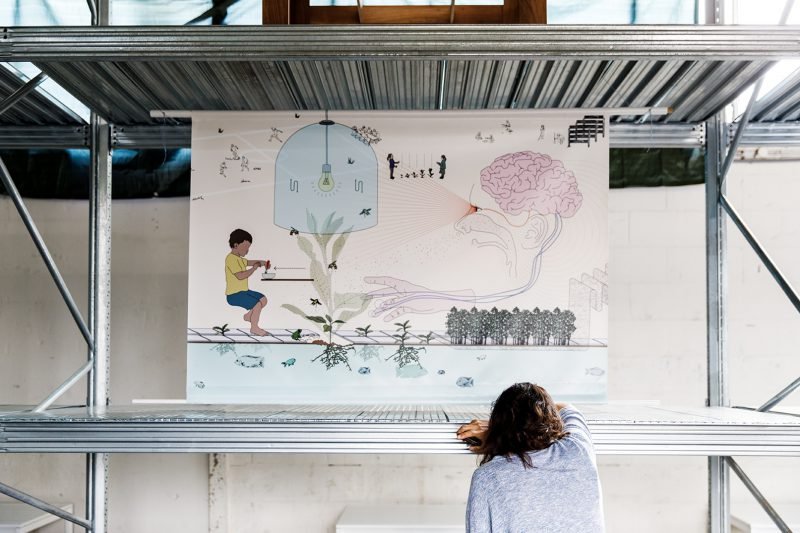Getting Lost In Hong Kong’s Narrow Back Lanes
We imagine Hong Kong as a global financial hub with infinity of skyscrapers. What happens in the spaces in-between? Curated by Parallel Lab‘s Geraldine Borio and Caroline Wuthrich, two Swiss architects based in Hong Kong, Hong Kong In-Between invites you to experience the bustling city’s narrow back lanes — the spaces in which we can find the true identity of Hong Kong.
 While Hong Kong’s urban area covers just nearly one quarter of the total land, the city is known for its lack of space, both private and public. The city has a long history of land reclamation both in the mountains as well as in the sea, but they do cherish the value of the nature that are found “just around the corner” in the mountains of the city. In this way, buildings are built sky high on limited buildable land, and a network of narrow streets within the mega-structure of towers and blocks forms the in-between spaces. In these narrow lanes, commonly associated with dark, dangerous and filthy conditions, the authors stumbled upon a ‘micro-scale society’, within the macro scale of towers. They found local micro businesses, varying from traditional craftsmen to hairdressers, isolated from the intense crowded streets around the corner.
While Hong Kong’s urban area covers just nearly one quarter of the total land, the city is known for its lack of space, both private and public. The city has a long history of land reclamation both in the mountains as well as in the sea, but they do cherish the value of the nature that are found “just around the corner” in the mountains of the city. In this way, buildings are built sky high on limited buildable land, and a network of narrow streets within the mega-structure of towers and blocks forms the in-between spaces. In these narrow lanes, commonly associated with dark, dangerous and filthy conditions, the authors stumbled upon a ‘micro-scale society’, within the macro scale of towers. They found local micro businesses, varying from traditional craftsmen to hairdressers, isolated from the intense crowded streets around the corner.
“When a city oppresses—in this case with its lack of space—people are inclined to find strategies to extend their private sphere beyond the domestic space.”
Public and private overlap. Each of the shop-owners found a way to extend their small-scale private shop space to the public narrow street, appropriating the space with attributes in an organic way. The scene is never the same: they expand and retract according to different times and seasons.

Many public spaces of the city are strongly regulated, some may say that this is over-regulation. Meanwhile the in-between spaces reflect a certain level of freedom: without clear regulation anything can happen here, even forbidden activities are tolerated as long as it’s hidden and unseen by authorities. The users of these spaces created their own set of rules that shows the consensus between neighbors.
“These are the only public spaces where you don’t have any regulations. Hong Kong city is so condensed and people’s homes are tiny. If you do not have such spaces you cannot live, cannot even breathe freely.”


The authors experienced this by themselves by organizing different activities together with the locals. Through their social experiment STAG, they managed to hold a tea party, an outdoor cinema and even a dance party, which never could happen without permission in other public spaces in the city.


With overregulation in other public spaces, these narrow lanes are extremely important as they act as buffer zones for all people in Hong Kong. This book changes the perception of these spaces by showing its importance rather than its negativity. In fact, here we can find the real meaning of public spaces: spaces that give the opportunity for people to appropriate the space and act and behave how they want. These unique spaces reveal the true identity of the city, one that reflects the ‘owners’ of the space, who are the citizens of Hong Kong.
“Our study of the back lanes has taught us that people’s freedom is not proportional to the size of space, but to the possibility of appropriation.”
Pop-Up City is an official media partner of the International Architecture Biennale Rotterdam 2016. Hong Kong In-Between is featured in IABR—2016’s main exhibition.



